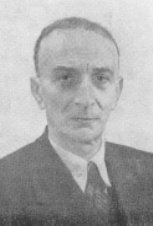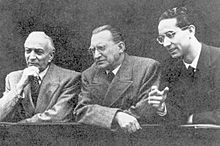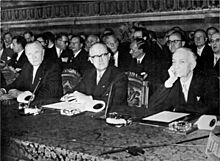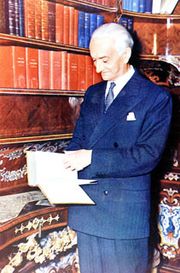Antonio Segni facts for kids
Quick facts for kids
Antonio Segni
|
|||||||||||||||||||||||||||||||||||||||||||||||||||||||||||||||
|---|---|---|---|---|---|---|---|---|---|---|---|---|---|---|---|---|---|---|---|---|---|---|---|---|---|---|---|---|---|---|---|---|---|---|---|---|---|---|---|---|---|---|---|---|---|---|---|---|---|---|---|---|---|---|---|---|---|---|---|---|---|---|---|

Official portrait, 1962
|
|||||||||||||||||||||||||||||||||||||||||||||||||||||||||||||||
| President of Italy | |||||||||||||||||||||||||||||||||||||||||||||||||||||||||||||||
| In office 11 May 1962 – 6 December 1964 |
|||||||||||||||||||||||||||||||||||||||||||||||||||||||||||||||
| Prime Minister | Amintore Fanfani Giovanni Leone Aldo Moro |
||||||||||||||||||||||||||||||||||||||||||||||||||||||||||||||
| Preceded by | Giovanni Gronchi | ||||||||||||||||||||||||||||||||||||||||||||||||||||||||||||||
| Succeeded by | Giuseppe Saragat | ||||||||||||||||||||||||||||||||||||||||||||||||||||||||||||||
| Prime Minister of Italy | |||||||||||||||||||||||||||||||||||||||||||||||||||||||||||||||
| In office 16 February 1959 – 26 March 1960 |
|||||||||||||||||||||||||||||||||||||||||||||||||||||||||||||||
| President | Giovanni Gronchi | ||||||||||||||||||||||||||||||||||||||||||||||||||||||||||||||
| Preceded by | Amintore Fanfani | ||||||||||||||||||||||||||||||||||||||||||||||||||||||||||||||
| Succeeded by | Fernando Tambroni | ||||||||||||||||||||||||||||||||||||||||||||||||||||||||||||||
| In office 6 July 1955 – 20 May 1957 |
|||||||||||||||||||||||||||||||||||||||||||||||||||||||||||||||
| President | Giovanni Gronchi | ||||||||||||||||||||||||||||||||||||||||||||||||||||||||||||||
| Deputy | Giuseppe Saragat | ||||||||||||||||||||||||||||||||||||||||||||||||||||||||||||||
| Preceded by | Mario Scelba | ||||||||||||||||||||||||||||||||||||||||||||||||||||||||||||||
| Succeeded by | Adone Zoli | ||||||||||||||||||||||||||||||||||||||||||||||||||||||||||||||
| Deputy Prime Minister of Italy | |||||||||||||||||||||||||||||||||||||||||||||||||||||||||||||||
| In office 2 July 1958 – 16 February 1959 |
|||||||||||||||||||||||||||||||||||||||||||||||||||||||||||||||
| Prime Minister | Amintore Fanfani | ||||||||||||||||||||||||||||||||||||||||||||||||||||||||||||||
| Preceded by | Giuseppe Pella | ||||||||||||||||||||||||||||||||||||||||||||||||||||||||||||||
| Succeeded by | Attilio Piccioni | ||||||||||||||||||||||||||||||||||||||||||||||||||||||||||||||
|
|||||||||||||||||||||||||||||||||||||||||||||||||||||||||||||||
|
|||||||||||||||||||||||||||||||||||||||||||||||||||||||||||||||
| Personal details | |||||||||||||||||||||||||||||||||||||||||||||||||||||||||||||||
| Born | 2 February 1891 Sassari, Kingdom of Italy |
||||||||||||||||||||||||||||||||||||||||||||||||||||||||||||||
| Died | 1 December 1972 (aged 81) Rome, Italy |
||||||||||||||||||||||||||||||||||||||||||||||||||||||||||||||
| Political party | PPI (1919–1926) DC (1943–1972) |
||||||||||||||||||||||||||||||||||||||||||||||||||||||||||||||
| Spouse |
Laura Carta Camprino
(m. 1921) |
||||||||||||||||||||||||||||||||||||||||||||||||||||||||||||||
| Children | 4 (including Mario) | ||||||||||||||||||||||||||||||||||||||||||||||||||||||||||||||
| Awards | Charlemagne Prize | ||||||||||||||||||||||||||||||||||||||||||||||||||||||||||||||
| Signature | |||||||||||||||||||||||||||||||||||||||||||||||||||||||||||||||
Antonio Segni (born February 2, 1891 – died December 1, 1972) was an important Italian politician. He served as the president of Italy from May 1962 to December 1964. Before that, he was the prime minister of Italy two times, between 1955 and 1960.
Segni was a member of the Christian Democracy party. He held many key jobs in Italy after World War II. He was a minister for foreign affairs, interior, defense, agriculture, and public education. He was the first person from Sardinia to become both head of state and head of government. He was also the first president to resign because of illness.
Contents
Early Life and Education
Antonio Segni was born in Sassari, Italy, in 1891. His father, Celestino Segni, was a lawyer and a professor. His mother, Annetta Campus, was a housewife. Antonio grew up in a well-off family that was active in politics in Sardinia.
In 1913, Segni graduated from the University of Sassari with honors in law. He then continued his studies in Rome. He became a favorite student of a famous lawyer, Giuseppe Chiovenda. There, he met Piero Calamandrei, who became his lifelong friend.
When World War I started, Segni joined the army as an artillery officer. After leaving the army, he became a lawyer. In 1920, he started teaching law at the University of Perugia. In 1921, he married Laura Carta Caprino. They had four children, including Mario Segni, who also became a well-known politician.
Beginning in Politics
Segni started his political journey in 1919. He joined the Italian People's Party (PPI), a Christian democratic group. In 1923, he became part of the party's national council. He ran in the 1924 election but was not elected.
In 1926, Benito Mussolini dissolved all political parties. Segni then left politics for 17 years. During this time, he continued teaching law at various universities. He even served as the head (rector) of the University of Sassari from 1946 to 1951.
In 1943, after Mussolini's government fell, Segni helped create the Christian Democracy (DC) party. This party was the successor to the PPI. In December 1944, he became an Undersecretary for Agriculture.
Minister of Agriculture
In the 1946 election, Segni was elected to the Constituent Assembly. This group was tasked with writing Italy's new constitution. In July 1946, he became the Italian Minister of Agriculture.
As minister, Segni focused on increasing farm production to help Italy recover after the war. He tried to change farming contracts but faced strong opposition. This led to his most important work: the land reform.
The land reform was approved in October 1950. It used money from the Marshall Plan (aid from the United States). This reform took land from large landowners and gave it to farmers. This helped many farmers become small business owners. While it helped many, it also made some farms smaller, which could make it harder for them to grow. Segni himself gave up most of his own land in Sardinia for this reform.
Minister of Public Education
In July 1951, Segni became the Italian Minister of Public Education. He focused on fighting illiteracy (people who cannot read or write). He also worked to improve teaching and build new schools.
In 1953, Italy had a general election. The government tried to change the election law to get more seats in parliament. This new law was called the scam law by its opponents. The government coalition won 49.9% of the vote, just missing the target for extra seats.
In July 1953, Segni left his role as Minister of Public Education. The prime minister, Alcide De Gasperi, resigned soon after. Segni later returned to the role for a short time under a new prime minister, Giuseppe Pella.
Prime Minister of Italy
In July 1955, Antonio Segni was asked to form a new government. He became prime minister on July 6. His government was supported by the Christian Democracy party and other smaller parties.
First Government (1955-1957)
Segni's first time as prime minister is seen as very important. In 1955, Italy became a member of the United Nations (UN). In March 1957, Segni signed the Treaty of Rome. This treaty created the European Economic Community (EEC), which was a step towards today's European Union (EU).
Segni strongly believed in European integration, thinking that European countries needed to unite to be strong in the world. He also built strong ties with West Germany. During his time as prime minister, he also managed Italy's role in the Suez crisis of 1956, protecting Italy's economic interests.
In May 1957, his government lost support and Segni resigned.
After the First Premiership
In July 1958, Segni became Deputy Prime Minister of Italy and Minister of Defence. As defense minister, he worked to improve the Italian armed forces. He increased pay for veterans and strengthened military equipment. He also agreed to have NATO missile bases in Italy, believing they were important for Italy's defense.
Second Government (1959-1960)
In February 1959, Segni became prime minister again. This time, his government was made up only of members from his Christian Democracy party. It was supported by other right-wing parties.
Segni worked to strengthen Italy's relationship with the United States. He wanted Italy to be a reliable ally. During this time, Italy's economy grew quickly. Industry and trade expanded, and unemployment went down.
His government also made social reforms. They extended insurance for work-related illnesses to farmers. They also increased pensions for retired civil servants and extended pension insurance to all artisans. In March 1960, Segni's government lost support and he resigned. He then became Minister of Foreign Affairs. In 1961, Segni made a historic trip to Moscow to meet Soviet leaders.
President of Italy
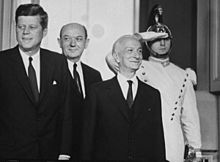
In May 1962, Antonio Segni was chosen as the Christian Democracy party's candidate for president. After several rounds of voting, Segni was elected president of Italy on May 6, 1962. He received 51% of the votes. He was the first official candidate from the Christian Democracy party to be elected president.
Many powerful groups, like the Bank of Italy and the military, saw Segni as a symbol of stability. His influence grew after the 1963 election. Even though Segni was against it, a new center-left government was formed later that year.
Vajont Dam Disaster
As president, Segni faced a terrible disaster: the Vajont Dam disaster. On October 9, 1963, a huge landslide fell into an artificial lake. This caused a giant wave of water, 250 meters high, to crash over the dam. It completely destroyed several villages and towns, killing 1,917 people.
The day after, Segni visited the affected areas and promised justice for the victims. Initially, the government said it was a natural event. However, there had been many warnings about the dam's instability that were ignored.
Illness and Resignation
On August 7, 1964, during a meeting, Segni suffered a serious stroke. He was 73 years old. He only partly recovered and decided to resign from office on December 6, 1964. After his resignation, Segni became a senator for life. A new presidential election was held, and Giuseppe Saragat was elected president.
Death and Legacy
Antonio Segni died in Rome on December 1, 1972, at the age of 81.
Throughout his political career, Segni was a moderate conservative. He was against his party moving too far to the left. He was the first Italian president to resign from office. Even though he was often ill, he was affectionately called il malato di ferro, meaning "the iron invalid." A friend once said he was like the Colosseum: "He looks like a ruin but he'll be around for a long time."
Images for kids
See Also
 In Spanish: Antonio Segni para niños
In Spanish: Antonio Segni para niños
- List of presidents of Italy by time in office


